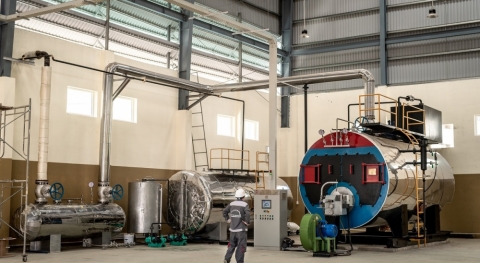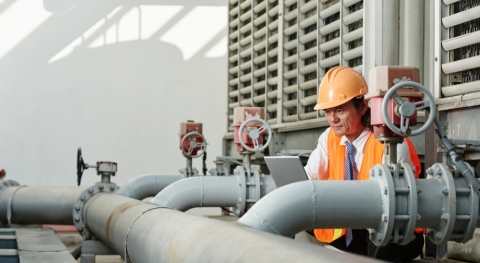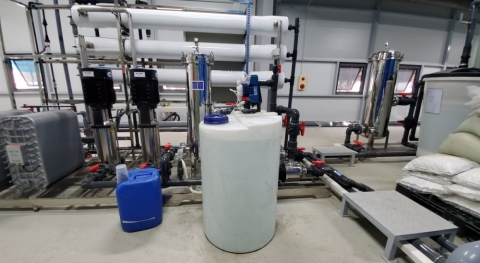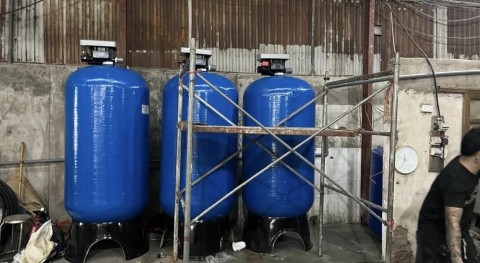Benefits of a Water Softening System
- Saves money in the long run
- Provides cleaner hair and softer skin
- Brightens and softens clothes
- Cleans dishes and glassware more effectively
- Makes drinking water clearer and tastier
How Does a Water Softening System Work?
Hard Water Softening Process
There are many types of water softening materials available, but most rely on the same principle—ion exchange, a chemical process that replaces sodium (or sometimes potassium) with hard water minerals.
In a typical system, water passes through a filter column containing resin beads saturated with sodium. These beads exchange calcium and magnesium ions in the water for sodium ions. As minerals attach to the beads, sodium from the beads enters the water volume. By the time household water exits the system, it is no longer hard.
Over time, the resin layer becomes saturated with minerals removed from hard water. At this point, the water softener undergoes a "regeneration cycle," in which sodium-rich water restores the resin beads to their original sodium-saturated state. After completing the cycle, the softening system resumes normal operation.
Types of Water Softening Materials
Cation Exchange Resin (Tultion Beads)
Water softening materials work by either removing heavy minerals from water through ion exchange or neutralizing them so they remain dissolved in the water without bonding together.
There are two main types of water softening materials that achieve this, though they function differently:
- Salt-based softeners, including dual-tank systems
- Salt-free softeners, including magnetic systems
Salt-Based Water Softeners
Salt-based water softeners are the most common and effective type of softeners. Most water softening systems use salt-based technology, offering a wide variety of options.
These systems work by drawing heavy minerals such as calcium and magnesium into the softener resin, exchanging them for sodium (salt). Removing these heavy minerals restores the water to a healthy, neutral state.
Pros and Cons of Salt-Based Water Softeners
- Pros: Highly effective at softening water
- Cons: Requires periodic salt refilling (typically once a week), larger in size compared to salt-free or magnetic softeners
However, there are portable salt-based softeners designed for mobile use. These systems are great for RVs and outdoor activities. A connecting hose allows users to attach the system to an outdoor faucet or campground water supply for instant access to softened water for cleaning, drinking, and bathing.
Salt-based softeners with 16,000-grain capacity can be recharged using simple table salt, though frequent recharging is needed for regular use. Smaller units are more affordable and ideal for light usage.
While salt-based softeners add sodium to water, the amount is typically minimal and rarely noticeable. The sodium levels remain within safe limits for healthy individuals. However, those on a low-sodium diet may prefer a salt-free softener that uses potassium instead of sodium.
.png)
Dual-Tank Water Softening Systems
A dual-tank water softener is a salt-based system with two resin tanks. These are often the best option for well water treatment, as they provide superior filtration of heavy minerals.
These systems operate similarly to single-tank softeners, but when one tank is undergoing regeneration, the second tank continues softening water.
Pros and Cons of Dual-Tank Softeners
- Pros: Never runs out of softened water, handles higher volumes
- Cons: Bulkier size, higher cost, requires salt refilling
Dual-tank softeners are not necessary for most households due to their size and installation complexity. However, they are ideal for large properties and homes requiring a continuous supply of softened water.
Salt-Free Water Softeners
Understanding the different types of salt-free softeners and their water treatment capacity is essential when choosing the right system.
Unlike salt-based softeners, salt-free softeners do not remove heavy minerals from water. Instead, they condition the water, preventing mineral deposits from accumulating on faucets and showerheads. The minerals remain in the water but undergo structural changes that prevent buildup.
Electromagnetic and Magnetic Softeners
Electromagnetic water softeners are compact, making them ideal for small spaces. Like other salt-free systems, these do not remove hard minerals but use magnetic fields to neutralize charged ions in heavy minerals. This prevents scale buildup by stopping the minerals from bonding together. Instead, they remain fully dissolved in the water.
.jpg)
Polyphosphate Systems
Polyphosphate treatment does not remove minerals from the water but coats them to prevent scale buildup in plumbing and faucets. These systems are primarily used in industrial, hospitality, and commercial settings to protect equipment from scaling.
Whole-House Filtration Systems
Whole-house filtration systems not only soften water but also remove other contaminants from drinking water. These salt-free systems work by passing water through a filter that crystallizes minerals, preventing them from bonding and forming scale, which can damage pipes and appliances.
These systems also filter contaminants such as herbicides, bacteria, viruses, pesticides, and chlorine. However, the filters can be expensive and typically last 6 months to 1 year.
Installing a Water Softening System
Considerations When Choosing a Water Softener
Unlike more common household products, water softening systems are not widely understood, making it challenging for consumers to evaluate the best options. Before selecting a system, consider the following factors:
Water Usage and Hardness Levels
Water softening systems come in various sizes to accommodate different household needs. Determining the right size depends on water usage and hardness levels.
To estimate daily water usage, multiply the number of household members by the average daily consumption per person (75 gallons per day).
- Example: A three-person household uses approximately 225 gallons per day.
Water hardness is measured in grains per gallon (gpg):
- >7.5 gpg: Hard water (requires softening)
Multiply the hardness level by daily water usage to determine the required softener capacity.
Example: 225 gallons per day × 10 gpg hardness = 2,250-grain capacity needed.
Water Softener Maintenance
The average lifespan of a water softener is 10–15 years. However, proper maintenance can extend its longevity.
Key Maintenance Steps:
- Check salt levels every 4–6 weeks. Low salt levels can allow hard water to return.
- Inspect the brine tank for salt bridges. These must be cleaned to ensure proper softening.
- Use the correct type of salt. Most systems require block or crystal salt, but always check the user manual.
- Clean the resin bed periodically using a softener cleaner to remove iron and heavy metals.
Cleaning Process:
- Drain and discard used salt and water.
- Scrub the brine tank with warm soapy water.
- Disinfect with ¼ cup of bleach + 2–3 gallons of water, let sit for 15 minutes, then rinse again.
- Refill with fresh water and salt.
Proper maintenance enhances water quality and prevents pressure drops due to mineral buildup.
Contact Us for Consultation
📌 REECHEM CO., LTD
📍 Address: 5th Floor, Lighthouse Building, 1254 Xô Viết Nghệ Tĩnh, Hòa Cường Nam, Hải Châu, Đà Nẵng
📞 Phone: 0236 391 88 68 / Hotline (Zalo): 0789 086 626
📧 Email: info@reechem.com.vn
🌐 Website: reechem.com.vn

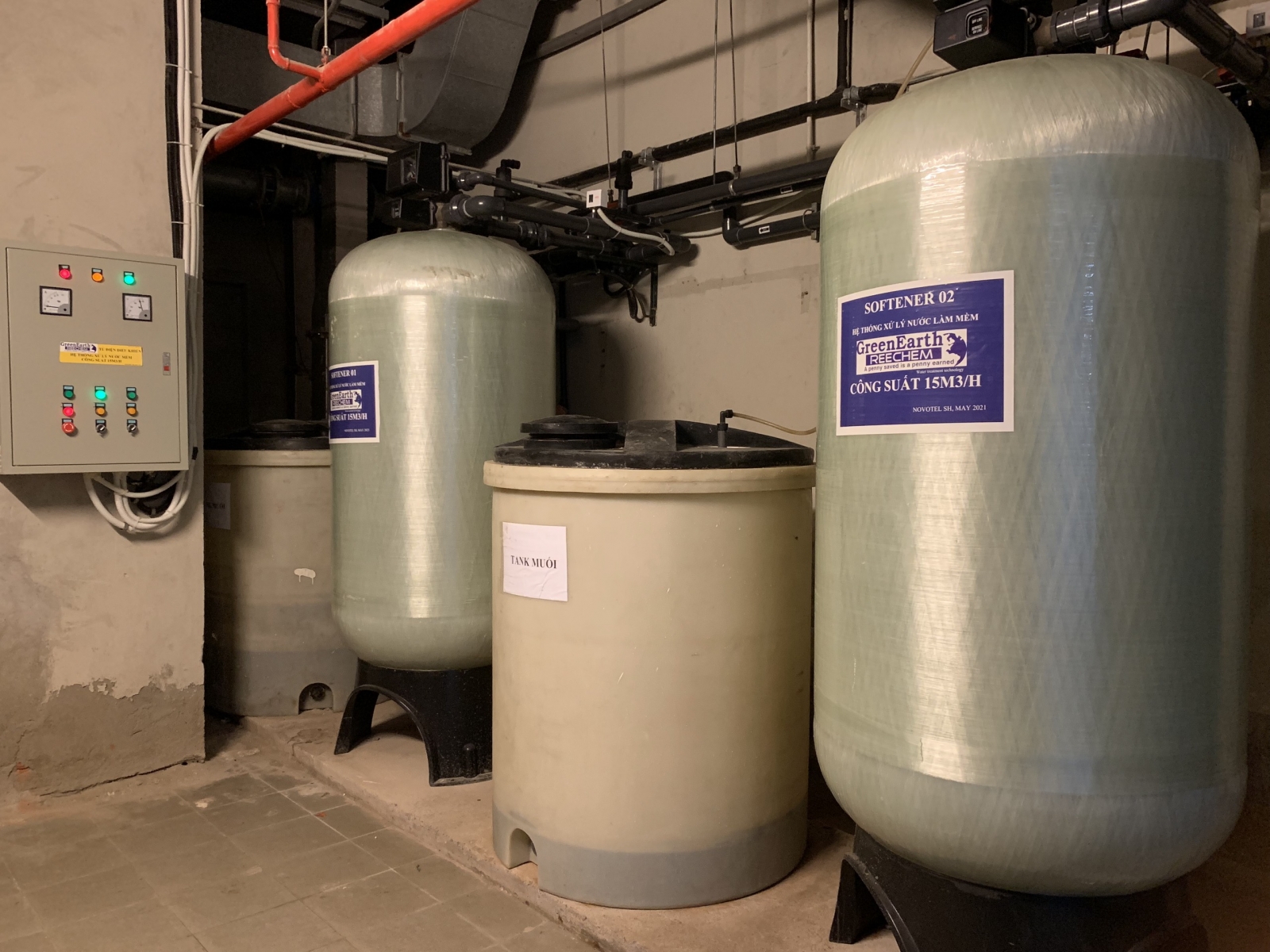









.png)
.jpg)
